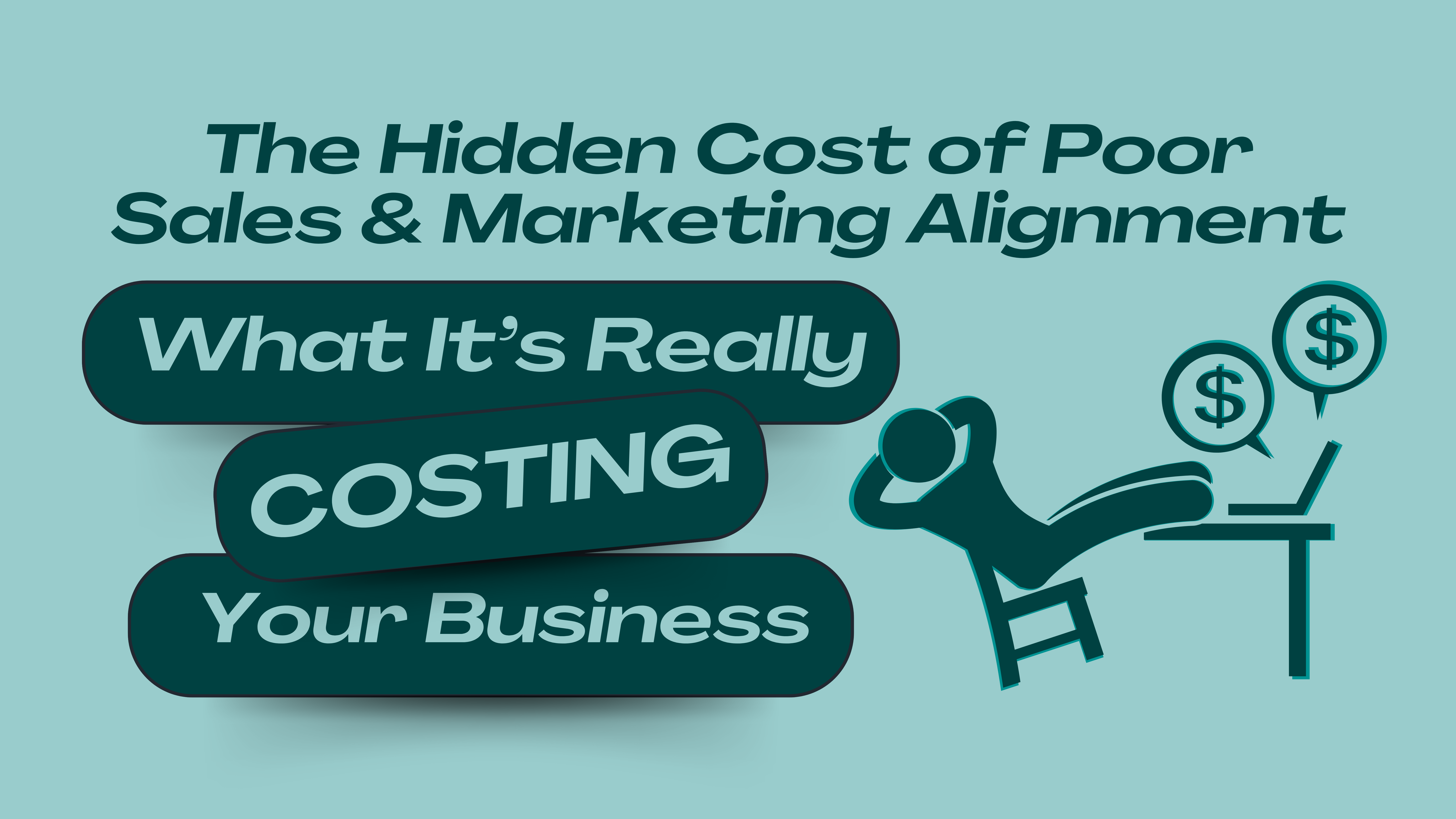For years, companies have treated sales and marketing as separate entities—one team generates demand while the other closes deals. But when these two functions aren’t aligned, the results are disastrous: lost revenue, wasted ad spend, and frustrated teams pointing fingers instead of solving the problem.
Many businesses don’t realize just how much money they are losing due to this misalignment. Studies show that companies with strong sales and marketing alignment achieve 208% higher marketing revenue and have 38% higher sales win rates compared to those that operate in silos.
If your marketing team is driving leads that never convert or your sales team is complaining about “bad leads,” this article is for you. Let’s break down the real cost of poor alignment and how you can turn it into a revenue-generating machine.
🚨 The Hidden Costs of Sales & Marketing Misalignment
1️⃣ Sales and Marketing Leads Are Falling Through the Cracks
Your marketing team spends thousands of dollars on campaigns to generate leads, but what happens after someone downloads an ebook or fills out a contact form?
- Marketing thinks their job is done – The lead enters the CRM, and marketing moves on to the next campaign.
- Sales doesn’t prioritize follow-up – If they don’t immediately see a lead as “sales-ready,” they ignore it.
- The prospect loses interest – Without timely follow-up, leads forget why they engaged in the first place.
🚩 Reality Check: Studies show that 78% of customers buy from the first company to respond. If sales waits too long or marketing fails to nurture leads, those opportunities are lost forever.
2️⃣ Conflicting Goals Create Misalignment
Marketing is focused on generating Marketing Qualified Leads (MQLs), while sales only cares about Sales Qualified Leads (SQLs). The problem?
- Marketing’s KPIs reward volume – They optimize for more leads, regardless of quality.
- Sales wants “hot” leads only – If a lead isn’t ready to buy today, it’s considered low priority.
- Disconnection between the two teams – Sales dismisses marketing’s efforts, and marketing doesn’t understand sales objections.
🚩 Reality Check: Without a shared definition of a qualified lead, marketing might drive thousands of MQLs that sales ignores, leading to wasted effort and ad spend.
3️⃣ Wasted Budget on Ineffective Campaigns
If marketing and sales aren’t aligned, companies end up spending money on campaigns that:
❌ Attract the wrong audience
❌ Focus on vanity metrics instead of conversions
❌ Fail to deliver leads that sales actually wants
🚩 Reality Check: Misalignment leads to companies spending 10-15% more on marketing with no additional revenue gains.
4️⃣ No Lead Nurturing = Lost Revenue
Not every lead is ready to buy immediately. Some need education, others need trust-building, and many need multiple touchpoints before they make a decision. Without a lead nurturing system in place:
- Prospects go cold before sales ever reaches them.
- Sales spends too much time on unqualified leads instead of working on high-priority deals.
- Marketing’s effort goes to waste because there’s no follow-up.
🚩 Reality Check: 79% of marketing leads never convert into sales because they aren’t properly nurtured.
5️⃣ A Broken Customer Experience Hurts Retention
When marketing and sales are disconnected, customers feel the impact. Inconsistent messaging, broken processes, and a lack of follow-through lead to:
❌ Confusion during the buying journey
❌ Frustration from unfulfilled expectations
❌ Higher churn rates and lost lifetime value
🚩 Reality Check: Companies with strong sales and marketing alignment experience 36% higher customer retention rates than those with disjointed teams.
🛠 How to Fix It: A Unified Revenue Strategy
Now that we’ve identified the problem, let’s talk solutions. Here’s how you can align sales and marketing to boost revenue, improve lead conversion, and stop wasting time on ineffective strategies.
1️⃣ Define a Shared Revenue Goal Between Sales and Marketing
Forget separate KPIs—both teams need a Revenue-Driven KPI Framework where success is measured by closed deals and customer retention, not just MQLs or SQLs.
✅ Set joint goals: Instead of marketing optimizing for lead volume, tie success to revenue generated.
✅ Create a shared definition of a ‘qualified lead’ so that marketing only passes leads sales actually wants.
✅ Hold joint meetings where sales and marketing teams review performance data together.
🚀 Example: If your marketing team generates 1,000 leads but only 50 convert, focus on improving lead quality and conversion rates, not just lead volume.
2️⃣ Optimize Lead Scoring & Nurturing
A lead isn’t just a name in the CRM—it’s someone moving through the buyer’s journey. Sales and marketing must agree on lead scoring criteria to:
✅ Identify high-intent leads based on engagement, website visits, and behaviors.
✅ Assign a lead nurturing plan for those who need more time before they’re ready to buy.
✅ Use automation to deliver personalized follow-ups instead of generic email blasts.
🚀 Example: A lead that downloads a pricing guide and visits your website 3 times in a week should be prioritized over someone who just opened an email.
3️⃣ Use CRM & Automation to Improve Handoffs Between Sales and Marketing
Many companies lose deals because they don’t have a clear system for managing leads. A well-optimized CRM (HubSpot, Salesforce, etc.) ensures that:
✅ Leads don’t get lost in spreadsheets or forgotten in someone’s inbox.
✅ Sales can track interactions to see what marketing content prospects engaged with.
✅ Automated workflows trigger follow-ups at the right time, increasing conversion rates.
🚀 Example: If a lead downloads a case study, an automated workflow can send a follow-up email and notify sales to reach out.
4️⃣ Establish a Closed-Loop Feedback System
For true alignment, sales must provide real-time feedback to marketing on:
✅ Which leads are closing and which ones aren’t.
✅ Objections prospects are raising so marketing can adjust messaging.
✅ Gaps in content that could help nurture leads better.
🚀 Example: If sales keeps hearing the same objections, marketing can create blog posts, case studies, or email sequences to address them before they become deal-breakers.
📈 The ROI of Sales & Marketing Alignment
Companies that successfully align sales and marketing:
✔ Increase revenue by 32% year over year
✔ Generate 67% more closed deals
✔ Improve conversion rates by 38%
✔ Reduce marketing waste by 10-15%
💡 Final Thought: If you’re not aligning sales and marketing, you’re leaving money on the table. Fixing this isn’t just about improving collaboration—it’s about driving real business growth and maximizing your marketing ROI.
Want to build a sales and marketing strategy that actually works? Let’s make it happen.



